The most valuable player for the Nashville Predators this past season was undoubtedly Juuse Saros, but behind him on the list, there were many other important contributors. Many of those players are without a contract moving into the 2021-22 season. While the unrestricted free agents (UFAs) have gotten a lot of attention of late, the restricted free agents (RFAs) have flown a little bit under the radar. That may be because there really isn’t a risk of losing these players, as the Predators do still own their rights and offer sheets are extremely rare.
However, if you look at the past Cup-winning teams, as well as those near the top of the standings in most years, one similarity is that they handle their RFA negotiations very well. If the Predators want to keep the positive momentum rolling after their second-half surge, then they need to find success in negotiating with their current RFA crop.
What would success look like, though? Well, in Nashville, it almost always seems that the longer the term with RFAs, the better. They have had success with long-term extensions from Roman Josi to Calle Jarnkrok to Colton Sissons, and in many of the cases below, that would be the ideal situation. However, when balancing term, getting the right annual cap hit for playing is also important. This will be especially true for the Predators in the flat-cap environment, so there will need to be a balance between penny-pinching and the lifetime value of the contract.
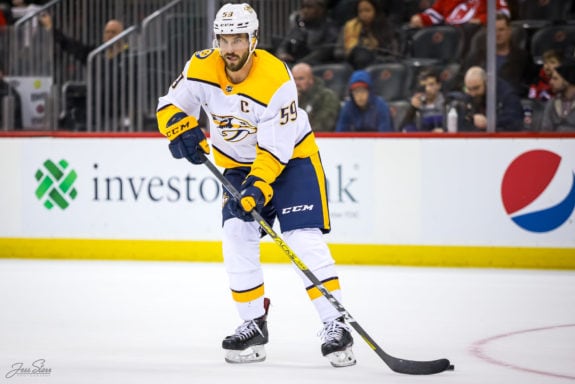
Over the last four years, I have been developing an algorithm to project future cap hits for players, and I’m going to apply that here to lay out what we might expect for each of the RFAs, and what a successful endpoint might be for both the team and the player.
Juuse Saros
As mentioned above, if it weren’t for Saros, the Preds may have been fighting for a top lottery spot rather than the playoffs. That kind of impact on a team is huge and something that not many goalies can have. With Saros coming off of his bridge deal and just entering his prime, now is the time to back up the Brinks truck for him.
My projection has him earning $6.37 million, which would be a fair number for both sides on a longer-term deal. Now, goalies being what they are, and Nashville also having drafted a top-tier future option in Yaroslav Askarov, David Poile might be reluctant to go the full eight years for Saros, pitching a five or six-year option instead. This would keep Saros in the fold through his prime while still not providing a roadblock like the one that the Panthers currently have in Sergei Bobrovsky blocking their future number one goalie.
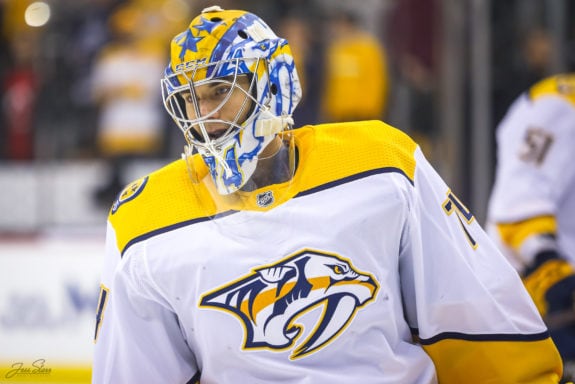
Saros himself might also benefit from a five or six-year term, as he is only 26 years old and would be able to then test free agency in his early 30s, just as the salary cap is really starting to rise again. In the meantime, he would have the security and comfort of a stable environment with the Predators and the knowledge that he is locked in as the team’s number one goalie for the foreseeable future.
Ideal result: Saros signs for $38.4 million spread out over six years, for an average annual value (AAV) of $6.4 million (the same number as Anaheim’s John Gibson), bringing Saros to UFA status at the age of 32.
Eeli Tolvanen
Nashville’s power play has struggled the last number of years, but with the recent addition of Tolvanen, it finally looks dynamic and dangerous again. The young Finn put up some fantastic underlying power play metrics, very comparable to Filip Forsberg, and will be a key part of the Predators’ offense moving forward. With the Preds also likely to lose a forward in the expansion draft, Tolvanen will see even more productive ice time than this past year.
My projection has him earning $2.51 million, which would make the most sense as a number on a shorter bridge deal. Now, David Poile hasn’t handed out many bridge deals in the past, however, with Tolvanen not even having 50 career games in the NHL, it may make sense to make an exception this time around for a very short bridge deal. This would give the winger a bit more negotiating power for his next contract and give the Predators the ability to ensure that he can handle himself over a full season.
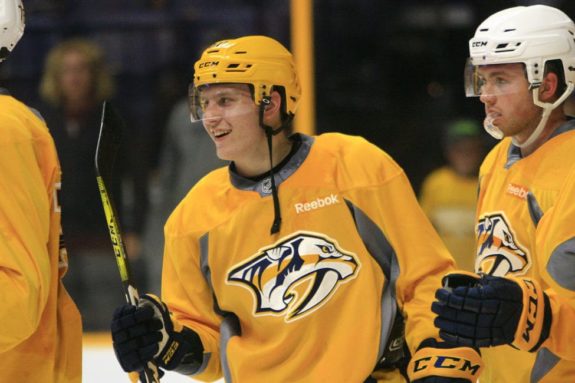
Tolvanen could then come back in a year or two and look for something closer to what Forsberg received coming off his ELC (with two full seasons under his belt). Forsberg signed a six-year, $36 million contract back in 2016, and that deal has worked out exceptionally well for the Predators.
Ideal result: Tolvanen signs at $2.5 million for one year and then a long-term deal for an AAV of around $5 million in 2022. If he signs a two-year bridge deal here, then the cost for the next contract only goes up.
Dante Fabbro
The fourth defenseman on the Predators’ depth chart struggled a little this past season, both on the ice and off the ice with injuries. He had the lowest possession numbers of the top-four defensemen while playing the least and the easiest minutes. Now, those are some quality teammates he has, and the numbers overall were fairly average compared to all NHL defencemen. For a 22-year-old who is just hitting 100 career games, that is quite good. It also means that the negotiations for his contract will depend heavily on how high his ceiling might be, instead of what he has shown to this point.
The Predators already have the template in-house for Fabbro’s next deal, between Josi, Mattias Ekholm, and Ryan Ellis. In their similar contract years, all three defensemen had scoring paces close to 25 points for a full season, and Fabbro is right on that mark as well. The three contracts to the Predators veterans were within three and six percent of the total cap dollars, which would paint a window between $2.45 million and $4.9 million. The higher end of that window would likely have to be an eight-year deal for it to be worth the risk/reward ratio on either side, while an AAV that had a two as the first number could be anything up to five years, just like Ellis’ five-year, $2.5 million AAV contract signed back in the summer of 2014.
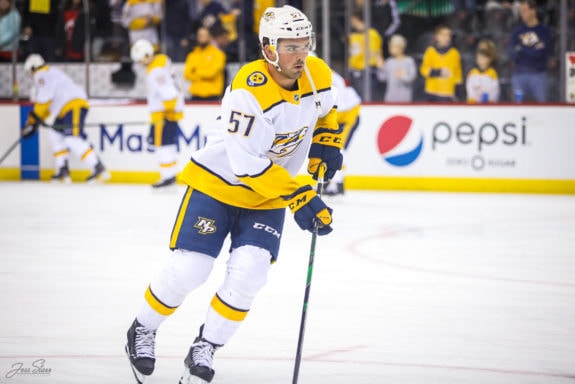
My projection has Fabbro earning something in the middle of those numbers, coming in at a $3.64 million AAV. If the Predators can lock up Fabbro at that price for a longer-term, it must be considered. However, there is another facet to this, and that is that a five-year contract would walk Fabbro’s right to unrestricted free agency. Four years might then be the ideal term for the Predators, but it is possible that Fabbro decides to push for five or six years at that price and hit the open market a lot sooner.
A shorter-term contract could work for both sides if they can’t agree on a longer-term option, but if history is anything to go on (and in the NHL, it usually is), then expect David Poile to push first for at least six years on Fabbro’s contract.
Ideal result: Fabbro signs for $14.4 million spread out over four years for a $3.6 million AAV, meaning that he would still be an RFA (with arbitration rights) at the end of the contract.
The Depth Forwards
Between the trio of Tanner Jeannot, Mathieu Olivier, and Rem Pitlick, the Predators have multiple players up for new contracts, which will also be key parts of their forward depth in the coming years. This year, Jeannot really established himself as an NHL-caliber energy player who could chip in with a great cycle game and a few points to boot. Olivier also showed well in short opportunities and is a legitimate contender for a full-time roster spot next season. Pitlick is a bit of a wild card after tearing up the AHL but not establishing himself in his 10 games in the NHL this season.
All three forwards are 24 years old and are RFAs with arbitration rights. That doesn’t necessarily mean that these players will get to arbitration. Still, it does give the players a little bit more leverage to add either term, dollars, or a one-way clause to the contract (meaning the player would get paid their full NHL salary even if they were demoted to the AHL).
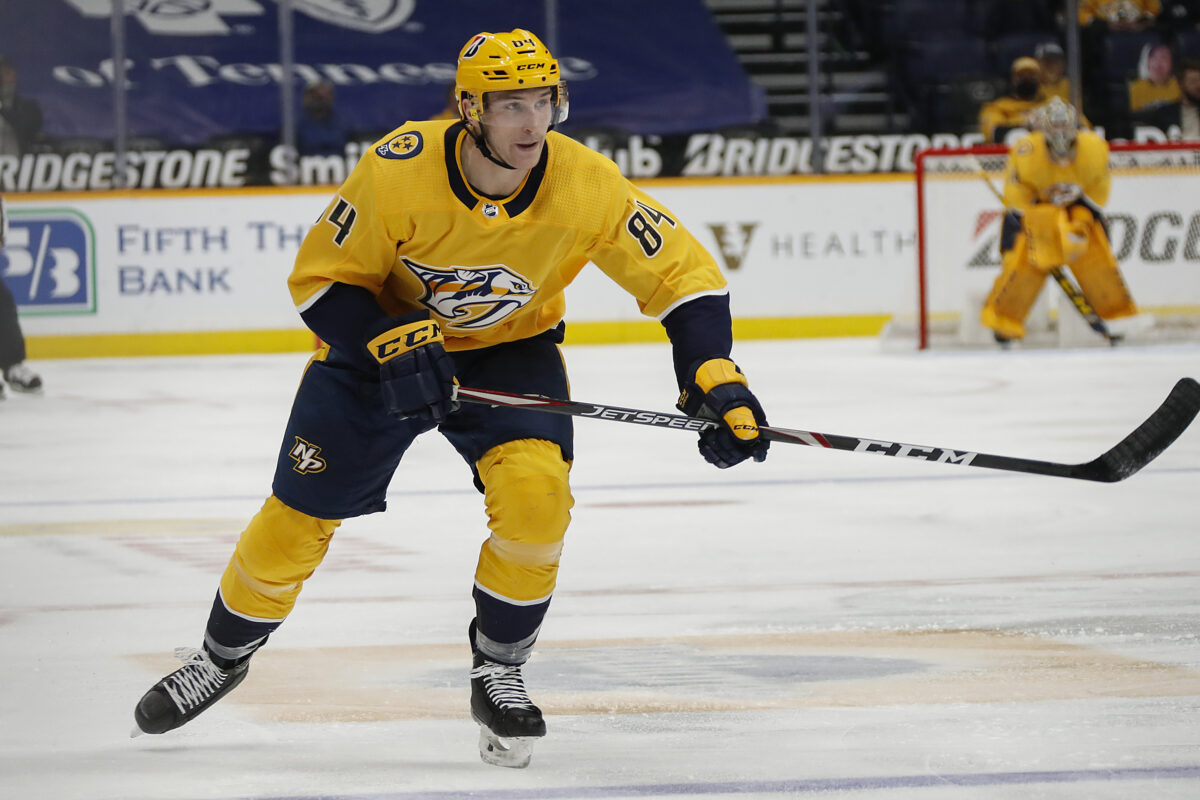
My projections only have Jeannot a larger AAV than the current league minimum of $750K, and he is projected at $820K. With both Olivier and Jeannot earning in the low $700K range this season, those small raises should suffice for next season on shorter contracts as they earn more opportunity. For Pitlick, however, the projected number would be a step down from the $875K that he earned this year, meaning he may be looking for something closer to the $900K range this time around.
Ideal result: Jeannot, Olivier, and Pitlick sign for a combined AAV of $2.5 million ($750K for Olivier, $850K for Jeannot, $900K for Pitlick), and one or two years for each as they will be looking to earn more in short order.
Overall Cap Situation
Working with the ideal result numbers from above, in addition to assuming that no UFAs are signed and Connor Ingram is called up to serve as next season’s backup, the resultant Nashville lineup has 15 forwards, eight defencemen, and two goalies under contract for the 2021-22 season; their total cap hit would be $82.3 million. Then, taking into account the loss of one contract to the Seattle expansion draft and then demoting one more skater, that would mean the Predators should have a full 23-man active roster on opening night, with a minimum of $1 million in cap space, dependant on who is selected by the Seattle Kraken.
Related: Predators Could Lose Significant Piece in Kraken Expansion Draft
All in all, the Predators are likely going to have to rely more on internal growth this year than bringing in any depth via free agency because they won’t have the cap space or the roster capacity to make many extra additions. Should they get through this summer without any issues, though, then they will likely be in a good position to deal with next summer’s free-agent crop of Forsberg, Ekholm, and Luke Kunin, which will be a much higher-stakes set than this year’s group. Overpaying or getting the term wrong on this summer’s group of RFAs will make next summer’s business exponentially more difficult.